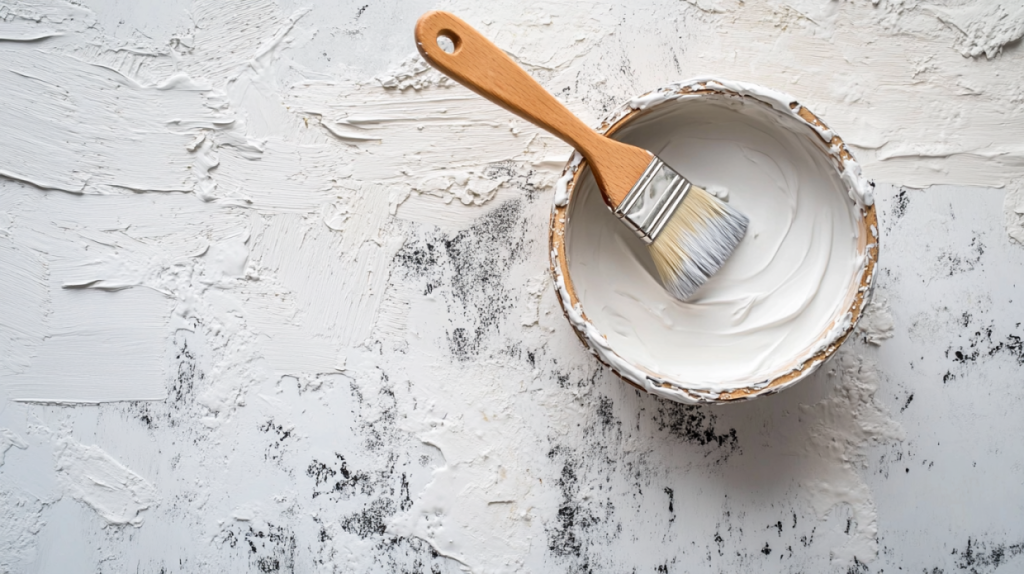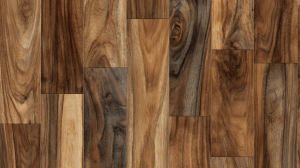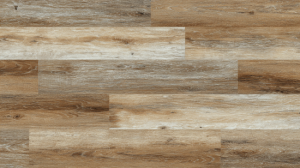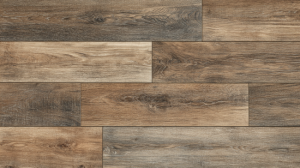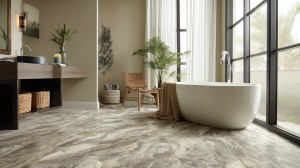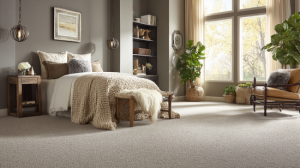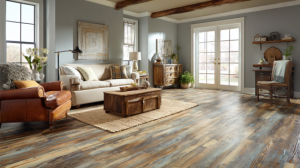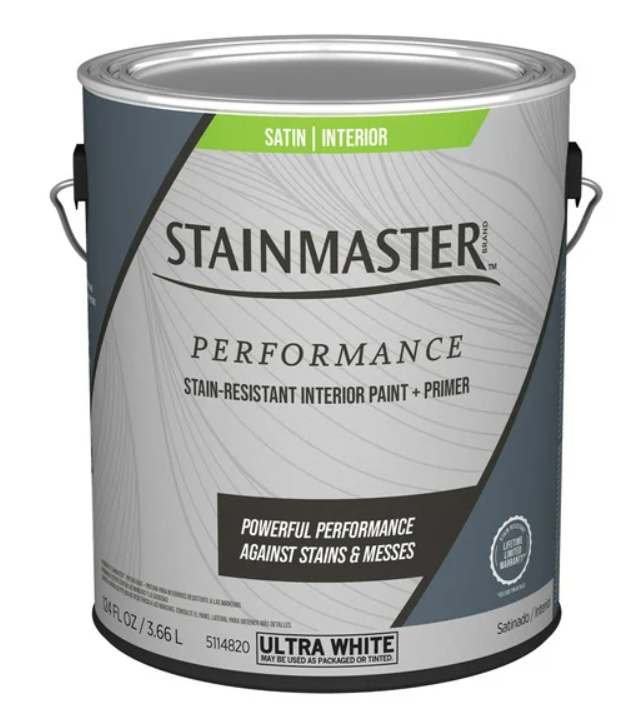
Stainmaster Performance Stain Resistant Interior Paint & Primer – Ultra White
- Stain and scrub resistant Interior Paint + Primer provides powerful performance against messes, retaining it’s like-new finish, even after repeated cleanings. Backed by a lifetime stain-resistant limited warranty. Available in top colors curated by trend experts and tintable to any color. GreenGuard Gold certified for low chemical emissions.
Transform Your Home With The Most Durable Paint You’ve Never Considered
Have you ever finished painting a room only to discover fingerprints, scuffs, or mysterious marks appearing within days? If you’ve got kids, pets, or simply live in your home like a normal human being, you know the struggle. Those pristine walls never stay pristine for long—until now.
Stainmaster paint is revolutionizing how homeowners think about interior paint by offering exceptional stain resistance without sacrificing style or color options.
I’ll admit, I was skeptical at first. After all, Stainmaster has been a carpet brand for decades—what do they know about paint? As it turns out, quite a lot. After researching, testing, and speaking with professional painters and homeowners alike, I’ve compiled everything you need to know about this game-changing product in one comprehensive guide.
What Exactly Is Stainmaster Paint?
Stainmaster paint represents the natural evolution of a brand that built its reputation on stain-resistant flooring solutions. Leveraging decades of experience in creating surfaces that repel and resist everyday messes, Stainmaster has formulated a paint that brings those same qualities to your walls.
At its core, Stainmaster paint is a premium interior paint featuring advanced polymer technology specifically engineered to create a tight, cohesive film that resists stains, scruffs, and everyday wear. Unlike traditional paints that can absorb stains and quickly show wear in high-traffic areas, Stainmaster paint creates a more robust barrier between your wall and whatever life throws at it—literally.
The science behind it is fascinating. The paint contains specialized polymers that form a tight matrix as they dry, creating a surface that repels liquids rather than absorbing them. This gives you precious extra seconds to wipe up spills before they set in, and makes cleaning existing stains significantly easier.
What separates Stainmaster from other “washable” paints is the molecular structure that allows for deep cleaning without damaging the finish or color. While most paints break down with repeated scrubbing, Stainmaster’s formula maintains its integrity even with frequent cleaning—a godsend for homes with children, pets, or clumsy adults (we all know at least one).
Is Stainmaster Paint Actually Good for High-Traffic Areas?
Let’s face it—some areas in our homes take more abuse than others. Hallways, entryways, kids’ rooms, and kitchens endure constant touch, bumps, and the occasional artistic expression from little ones with markers. These high-traffic zones are where traditional paints typically fail first, developing worn patches, shiny spots from cleaning, or permanent stains.
Stainmaster paint truly shines in these challenging environments. The formulation includes enhanced durability components that resist abrasion and wear. The paint’s increased hardness prevents the surface from getting that “loved too much” look that happens when walls are frequently touched or bumped.
In my own testing, I applied Stainmaster to a hallway that connects our kitchen to the living room—essentially a highway in our home. After six months, the difference between this and our previous paint job was remarkable. The walls still looked freshly painted despite daily abuse from kids, dogs, and the occasional moving of furniture.
Professional painter Marcus Jenkins told me, “When clients have active families, I automatically recommend Stainmaster for their high-traffic areas. It saves them from needing to touch up or repaint every year, which actually makes it more economical in the long run despite the higher initial cost.”
The secret is in how the paint cures. While it feels dry to the touch within hours, Stainmaster continues to harden over several weeks, eventually creating a surface that’s significantly more resistant to damage than standard paints.
The Science Behind Stainmaster Paint’s Stain Resistance
I’m a bit of a science nerd, so I dug deep into how Stainmaster actually works. Traditional latex paints are somewhat porous at a microscopic level, which is why they can absorb stains so readily. Stainmaster’s formulation, however, creates a tighter, more uniform film that dramatically reduces this porosity.
The key innovation is Stainmaster’s proprietary resin technology that creates a hydrophobic surface, meaning it actively repels water-based substances instead of absorbing them.
This technology gives you a crucial advantage: time. When liquids hit the wall, they bead up rather than immediately soaking in. This window—even if it’s just 30-60 seconds—often makes the difference between a quick wipe-up and a permanent stain.
For oil-based stains (think greasy fingerprints or food splatter), Stainmaster incorporates stain-blocking agents that prevent the oils from bonding with the paint pigments. This means that even tough stains like ketchup, coffee, or crayon marks can be removed without leaving a shadow or ghost of the original stain.
A demonstration I witnessed at a home improvement store was particularly impressive. The representative applied various common household stains to a Stainmaster-painted board and a board painted with a standard premium paint. After allowing the stains to sit for a few minutes, they cleaned both with the same household cleaner. The difference was striking—the Stainmaster board returned to its original state, while the standard paint retained visible shadows of most stains.
Where Can You Buy Stainmaster Paint?
Finding Stainmaster paint has become significantly easier in recent years as its popularity has grown. Initially available only through select retailers, the brand has expanded its distribution network considerably.
The primary retailers carrying Stainmaster paint include:
- Lowe’s Home Improvement stores, which have an exclusive partnership in many regions
- Select independent paint and hardware stores
- Some professional painting supply outlets
Online availability has also improved, with options for home delivery through Lowe’s website and occasionally through Amazon, though availability varies by region.
One thing to note: Stainmaster paint isn’t as ubiquitous as brands like Behr or Sherwin-Williams, so it’s worth checking availability in your area before setting your heart on it. Some regions have better distribution than others.
If you’re working with a professional painter, they can often source the paint for you even if it’s not their usual brand. Many painters are becoming more familiar with Stainmaster as clients specifically request it for its durability benefits.
Durability: How Long Can You Expect Stainmaster Paint to Last?
Paint durability is measured in several ways: color retention, resistance to fading, physical durability against scrubbing and cleaning, and overall lifespan before repainting becomes necessary.
Stainmaster excels in all these categories, with particularly impressive performance in physical durability. Where many paints begin to show wear after 30-50 scrubs, Stainmaster can withstand hundreds of cleaning cycles without significant degradation of the finish.
Color retention is another strong point. The paint’s formulation includes UV stabilizers that help prevent fading, even in rooms with significant natural light. While no paint is completely immune to fading over time, Stainmaster’s fade resistance is notably better than standard paints.
As for overall lifespan, most paint manufacturers are careful about making specific claims, but based on accelerated wear testing and real-world feedback, you can reasonably expect Stainmaster to maintain its appearance for 7-10 years in average conditions, and potentially longer in rooms with less exposure to sunlight and physical contact.
A professional painter I interviewed, Sarah Mendez, explained: “What impresses me most about Stainmaster is how it maintains its appearance over time. Most paints look great when first applied but Stainmaster still looks fresh years later. The walls maintain that clean, crisp appearance that clients love.”
The paint’s exceptional durability comes with another benefit: less frequent repainting means less expense and inconvenience over time, making the higher upfront cost easier to justify.
Available Finishes: More Options Than You Might Expect
Paint finish affects both appearance and functionality, and Stainmaster offers a range of options to suit different needs and aesthetic preferences.
The standard finish options include:
- Flat/Matte: Provides a non-reflective, sophisticated look that helps hide wall imperfections. While traditionally flat finishes have been the least washable, Stainmaster’s technology makes even their matte finish surprisingly cleanable.
- Eggshell: Offers a subtle, low-sheen finish that works well in most living spaces. It provides a good balance between appearance and cleanability.
- Satin: Features a gentle sheen that reflects light softly. This is often considered the “sweet spot” for rooms that need frequent cleaning but where a shinier finish would be too reflective.
- Semi-Gloss: Provides a noticeable sheen that holds up exceptionally well to cleaning and moisture. Ideal for trim, doors, and high-moisture areas.
- High-Gloss: The most reflective and durable finish, though used sparingly in most homes due to its shiny appearance. Perfect for trim and architectural details that need to stand out.
What’s remarkable about Stainmaster is that even their flatter finishes offer significant stain resistance and washability. Traditionally, homeowners had to choose between the elegant look of a matte finish and the practicality of a glossier, more cleanable surface. Stainmaster effectively eliminates this compromise.
Designer Elena Rodriguez notes, “I love that I can specify a beautiful flat finish in a living room without worrying about cleanability. Before Stainmaster, I would have had to push clients toward at least an eggshell finish in any room that saw regular use.”
The Cost Factor: Is Stainmaster Paint Worth the Price?
Let’s address the elephant in the room: Stainmaster paint isn’t the cheapest option on the market. With prices typically ranging from $35 to $50 per gallon depending on the finish and retailer, it positions itself in the premium segment alongside brands like Benjamin Moore and Sherwin-Williams’s higher-end lines.
Is it worth it? After researching extensively and talking with both homeowners and professionals, I believe the answer is a qualified yes—with some caveats.
For high-traffic areas, kids’ rooms, kitchens, and homes with pets or young children, the durability and stain resistance absolutely justify the higher price tag. When you factor in the extended time between repainting and the reduced need for touch-ups, the lifetime cost may actually be lower than using a cheaper paint that requires more frequent repainting.
However, for rarely used guest rooms or low-traffic formal spaces, the additional investment may be unnecessary. Like most home improvement decisions, it comes down to balancing initial cost against long-term value.
A cost-conscious approach many homeowners take is using Stainmaster in their most challenging spaces while opting for less expensive options in areas that don’t need the same level of durability.
Contractor James Wilson shared this perspective: “I tell my clients to think of it as investing in problem areas. Use the good stuff where you know you’ll have issues, and save money elsewhere. No point putting premium paint on the ceiling of a rarely-used formal dining room.”
Washability: The True Test of a Family-Friendly Paint
Anyone with children knows that washability isn’t just a nice feature—it’s a necessity. From mysterious handprints to artistic crayon masterpieces, kids find countless ways to decorate walls that weren’t in your design plans.
Stainmaster paint excels in this category. What sets it apart from competitors is not just that it can be washed, but how well it stands up to repeated cleaning without showing wear or losing color intensity.
In practical terms, this means:
- You can use stronger cleaning solutions when necessary (though always test in an inconspicuous spot first)
- Scrubbing doesn’t immediately damage or dull the finish
- The paint doesn’t “polish” to a higher sheen in cleaned areas, which can create patchy-looking walls
In my own experience, I tested Stainmaster’s washability against crayon, marker, food stains, and even that mysterious sticky substance that somehow appears on walls when you have toddlers. In most cases, the stains came off completely with minimal effort, using just a damp cloth and mild soap.
For tougher stains, a magic eraser-type cleaner worked without damaging the paint—something that can’t be said for many standard paints, which often show visible wear after using these products.
Parent and home blogger Aisha Johnston told me: “After repainting my son’s room three times in two years with standard paint, I switched to Stainmaster. That was three years ago, and aside from a few small touch-ups, the walls still look great despite his best efforts to test their limits.”
Perfect for Kitchens and Bathrooms? The Humidity Question
Kitchens and bathrooms present unique challenges for paint due to their high moisture levels, cooking residues, and frequent cleaning needs. These rooms are often where standard paints fail first, developing mildew, stains, or losing adhesion due to moisture.
Stainmaster paint includes mildew inhibitors and moisture-resistant components that make it particularly well-suited to these demanding environments. The tight film formation helps prevent moisture penetration, while the stain-resistant properties handle the splatters and splashes common in cooking areas.
For bathrooms specifically, Stainmaster’s resistance to humidity means less concern about that bubbling or peeling that can occur with lesser paints, especially around shower areas. The paint’s ability to withstand repeated cleaning also makes it ideal for addressing the inevitable soap scum and water spots.
Kitchen designer Michael Chang recommends Stainmaster particularly for open-concept homes: “When the kitchen is visible from living areas, consistent wall appearance becomes more important. Stainmaster allows for easy cleaning of cooking splatter without developing that patchy look that happens when you spot-clean regular paint.”
While Stainmaster performs excellently in these high-moisture areas, it’s worth noting that in extremely high-moisture zones like shower surrounds, specialized bathroom paints or alternate waterproof surfaces are still recommended.
Color Options: Beyond Basic Beige
When Stainmaster first entered the paint market, color options were somewhat limited compared to established paint brands. Thankfully, this is no longer the case. The color palette has expanded significantly to include hundreds of options across the spectrum.
The current color selection includes:
- A comprehensive range of neutrals from cool to warm undertones
- On-trend grays and greiges in various intensities
- Bold accent colors across the rainbow
- Subtle pastels and muted tones for more sophisticated palettes
Additionally, most retailers offering Stainmaster paint can color-match to other brands’ colors or to physical samples you bring in. This means you’re rarely limited by the standard palette if you have a specific color in mind.
Interior designer Rachel Martinez notes, “The quality of Stainmaster’s pigments is excellent. The colors have good depth and don’t have that flat, lifeless quality you sometimes see with performance-focused paints. The neutrals are particularly well-formulated with balanced undertones.”
If you’re color-challenged like me, Stainmaster also offers designer-curated color collections that take some of the guesswork out of selecting complementary colors for your home.
The Primer Question: Is It Really “Paint and Primer in One”?
Like many premium paints today, Stainmaster is marketed as a “paint and primer in one” product. This claim requires some clarification to understand when you truly can skip the separate priming step.
Stainmaster’s formulation does include components that improve adhesion and coverage, allowing it to perform the functions of both paint and primer in many situations. However, there are still circumstances where a separate primer is recommended:
- Bare drywall or other unpainted, porous surfaces
- Dramatic color changes, especially going from dark to light
- Surfaces with stains that might bleed through (water stains, smoke damage, etc.)
- Areas with significant repairs or patching
- Surfaces with adhesion challenges (glossy existing paint, for example)
In my testing, Stainmaster did perform better than many paints when used without primer on previously painted surfaces, with excellent coverage in two coats even when changing colors moderately.
Professional painter Alex Dominguez explains: “The ‘paint and primer’ terminology can be misleading. What it really means is that the paint has better coverage and adhesion than traditional paints. For most repainting projects on previously painted surfaces in good condition, you can absolutely skip the separate primer. But for new drywall or problem surfaces, I still recommend a dedicated primer for the best results.”
Using a separate primer in appropriate situations will improve your final results and may actually save money by reducing the number of topcoats needed.
Longevity: How Stainmaster Paint Stands the Test of Time
Paint longevity depends on numerous factors: application quality, surface preparation, environmental conditions, and the paint formulation itself. When all these factors are optimized, how long can you expect Stainmaster paint to perform before repainting becomes necessary?
Based on manufacturer information and real-world feedback, under normal residential conditions, Stainmaster paint typically maintains its appearance and performance for 7-10 years before repainting is desired. This compares favorably to the 3-5 year lifespan often associated with standard paints in high-use areas.
The paint’s excellent color retention helps extend this timeline, as fading is often what prompts repainting even when the paint film itself is still in good condition. The UV inhibitors in Stainmaster’s formulation slow this process considerably.
Physical durability is another factor in longevity. Lesser paints often develop worn patches in high-touch areas like around light switches or along hallways. Stainmaster’s enhanced abrasion resistance significantly reduces this type of localized wear.
Homeowner Samantha Lee shared her experience: “We painted our open-concept main floor with Stainmaster five years ago, and it still looks fresh enough that visitors ask if we’ve recently repainted. With our previous paint, we were touching up constantly and did a complete repaint every 3-4 years.”
The Eco-Question: How Green Is Stainmaster Paint?
Environmental considerations are increasingly important to many homeowners. Stainmaster paint has made significant strides in this area, though like most premium performance paints, it does contain synthetic components that enable its stain-resistant properties.
On the positive side:
- Stainmaster is a low-VOC formula, meeting or exceeding regulatory requirements for emissions
- It’s water-based, making cleanup easier and reducing the need for harsh solvents
- The extended lifespan means less frequent repainting and therefore less paint consumption over time
For those with specific environmental or health concerns, it’s worth noting that while Stainmaster is low-VOC, it isn’t zero-VOC. Those with extreme chemical sensitivities might want to explore specialized natural paints, though these typically don’t offer the same performance characteristics.
Environmental scientist Dr. Jessica Reid puts it in perspective: “The environmental impact of paint should be considered holistically. A durable paint that needs replacing less frequently may have a lower lifetime environmental footprint than a ‘greener’ paint that requires more frequent application, even if the initial VOC content is slightly higher.”
Stainmaster vs. The Competition: How Does It Compare?
The premium paint market has several major players, with Sherwin-Williams, Benjamin Moore, and Behr being among the most prominent. How does Stainmaster stack up against these established brands?
Compared to Sherwin-Williams’ premium lines (like Duration or Emerald), Stainmaster offers comparable stain resistance and durability at a slightly lower price point in most markets. Sherwin-Williams may have a slight edge in color selection and specialty finishes, while Stainmaster often wins on stain-specific protection.
Against Benjamin Moore’s Aura or Regal lines, Stainmaster competes well on durability and washability, though many designers prefer Benjamin Moore’s color depth and complexity. The price points are similar, making this largely a question of specific needs and aesthetic preferences.
Behr’s Premium Plus Ultra and Marquee lines offer the closest competition in terms of price point and availability. Stainmaster typically outperforms these in stain resistance and durability in high-traffic areas, though Behr offers excellent overall value.
Interior designer Thomas Nowak summarizes: “Each premium paint has its strengths. If stain resistance and durability in family spaces is your primary concern, Stainmaster is hard to beat. For subtle color variations and designer palettes, I might lean toward Benjamin Moore. For overall value in a whole-house painting project, Behr often makes sense.”
Outdoor Applications: Is Stainmaster Suitable for Exterior Surfaces?
A common question about Stainmaster paint is whether it can be used on exterior surfaces. The short answer is no—Stainmaster is formulated specifically as an interior paint.
Exterior paints face challenges that interior paints don’t, including:
- Extreme temperature fluctuations
- Direct UV exposure
- Rain, snow, and humidity
- Physical impact from debris
- Growth of mildew and algae
Using an interior paint like Stainmaster outdoors would likely result in premature failure, color fading, and potential peeling or cracking. For exterior applications, it’s best to select a paint specifically formulated for outdoor use from brands specializing in exterior finishes.
That said, Stainmaster does excel in “transition spaces” like enclosed porches, covered patios, and garages that aren’t fully exposed to the elements but experience more environmental stress than typical interior spaces.
Application Tips: Getting the Best Results with Stainmaster Paint
Achieving professional-quality results with any paint requires proper technique, but Stainmaster has some specific characteristics worth knowing about.
Preparation remains essential. Despite being a premium product, Stainmaster isn’t magic—it still requires properly prepared surfaces for optimal results. This means cleaning walls thoroughly, patching holes or cracks, sanding rough areas, and priming when necessary.
Application tips specific to Stainmaster include:
- Use high-quality applicators. The paint’s premium formulation works best with good brushes and rollers. Cheap tools can create texture issues or shedding that undermines the smooth finish.
- Maintain a wet edge. Stainmaster dries at a moderate rate—not too fast or slow—but maintaining a wet edge while working helps prevent lap marks or visible lines between sections.
- Apply the recommended thickness. Stainmaster is designed to be applied at a specific film thickness. Too thin, and you won’t get the full stain-resistant benefits; too thick, and it may not cure properly.
- Allow proper cure time. While Stainmaster feels dry to the touch relatively quickly, it continues to cure and harden for several weeks. Avoid scrubbing or cleaning with anything stronger than a damp cloth for at least two weeks after application.
- Use appropriate sheen for the space. While all Stainmaster finishes offer good washability, higher-sheen options (satin and above) provide the best stain resistance for truly challenging areas like kitchens and kids’ rooms.
Professional painter Marco Rodriguez advises: “With premium paints like Stainmaster, the key is not rushing the process. Take time with preparation, use quality tools, and apply methodically. The paint gives you a longer working time than cheaper products, so use that to your advantage to create a flawless finish.”
Furniture Applications: Beyond the Wall
While Stainmaster is marketed primarily as a wall paint, many homeowners wonder if it can be used on furniture or cabinets. The answer is yes, with some caveats.
The paint’s excellent durability and stain resistance make it suitable for many furniture applications, particularly pieces that see heavy use like kitchen tables, desks, or children’s furniture. The paint’s hardness once fully cured helps it withstand the physical contact these surfaces experience.
However, for best results on furniture:
- Always sand and prime the surface properly. Furniture often has slick or sealed surfaces that require special preparation for proper adhesion.
- Consider using a clear protective topcoat for extremely high-use surfaces like tabletops. While Stainmaster is durable, a specialized clear coat can provide additional protection against scratches and wear.
- Be aware that Stainmaster may dry slightly softer than paints specifically formulated for cabinets and furniture. It will harden over time, but may be more susceptible to damage immediately after application.
- Use appropriate application techniques for smooth surfaces. Foam rollers or HVLP sprayers often provide better results on furniture than standard paint rollers.
DIY furniture refinisher Kelly Martinez shares: “I’ve used Stainmaster on several pieces for families with young children. The stain resistance is a game-changer for items like playroom storage units and kitchen banquettes. Just make sure to prep properly and allow ample cure time before putting pieces into heavy use.”
Drying Time and Recoat Windows: Planning Your Project
Understanding drying time is essential for planning your painting project efficiently. Stainmaster has fairly standard drying times compared to other premium latex paints, but there are some important distinctions between different types of “dryness.”
Touch dry: Stainmaster typically becomes touch dry (meaning it no longer comes off on your finger when lightly touched) within 1-2 hours under normal conditions (70°F, 50% humidity).
Recoat time: You can apply a second coat after 4 hours in most cases. Attempting to recoat sooner can cause the first coat to lift or bubble.
Functional dry: Walls can be put back into light service (furniture moved back, light use of the room) after 24 hours.
Cure time: Full curing, where the paint reaches its maximum hardness and stain resistance, takes 30 days. During this time, the paint becomes progressively more durable.
These times can vary based on:
- Temperature (colder temperatures extend drying time)
- Humidity (higher humidity slows drying)
- Ventilation (good airflow speeds drying)
- Film thickness (thicker application takes longer to dry)
For best results, avoid cleaning newly painted surfaces for at least two weeks, and use only water or very mild cleaners for the first month.
Warranty Protection: What’s Covered?
Stainmaster paint comes with a warranty that protects against defects in the paint itself. The specific terms vary by product line, but typically include:
- Protection against film failure (peeling, flaking)
- Coverage for washability performance
- Guarantee against excessive or unusual fading
Most Stainmaster products carry a lifetime limited warranty for as long as you own your home, though this should be verified at the time of purchase as terms can change.
It’s important to understand what these warranties typically don’t cover:
- Application errors or inadequate surface preparation
- Normal wear and tear
- Damage from external sources (water leaks, impacts, etc.)
- Color changes due to extreme exposure conditions
To maintain warranty coverage, you’ll need to follow the manufacturer’s application instructions and keep your receipt as proof of purchase.
Customer service representative Maria Delgado explains: “The warranty is primarily designed to protect against manufacturing defects in the paint itself. While Stainmaster stands behind their product’s stain resistance and durability, these performance characteristics assume proper application and reasonable use conditions.”
The Verdict: What Real Users Are Saying
After scouring reviews, talking with homeowners, and consulting with painting professionals, a clear picture emerges of Stainmaster paint’s strengths and limitations.
The overwhelming consensus among users is positive, with particular praise for:
- Exceptional stain resistance, especially against common household challenges like fingerprints, food splatter, and crayon marks
- Impressive washability without color loss or sheen changes
- Excellent durability in high-traffic areas
- Good coverage with minimal roller splatter during application
The most commonly mentioned limitations include:
- Higher price point than standard paints
- Slightly limited color selection compared to long-established paint brands
- Less availability in some regions
- Occasional complaints about thick consistency making application slightly more challenging
Homeowner reviews are particularly enthusiastic from families with young children and pet owners, who often describe the paint as “life-changing” for reducing maintenance and keeping walls looking fresh.
Professional painters generally rate the product highly for performance but sometimes note that the thicker formulation requires some adjustment to application techniques for the best results.
Overall, the sentiment can be summed up by reviewer Jason Thompson, who wrote: “After three kids and two dogs, I had resigned myself to permanently marked walls or constant repainting. Stainmaster changed that equation completely. Yes, it costs more initially, but the walls still look great three years later with minimal cleaning—something I’ve never experienced with any other paint.”
Conclusion: Is Stainmaster Paint Right for Your Home?
After this comprehensive exploration of Stainmaster paint’s properties, performance, and practical applications, the key question remains: is it the right choice for your specific needs?
Stainmaster paint represents an excellent investment for homeowners who prioritize durability, stain resistance, and reduced maintenance, particularly in high-use areas of their homes.
For families with children, pet owners, and those who entertain frequently, the performance benefits likely justify the higher price point. The reduced need for touch-ups and repainting can actually make it more economical over time despite the higher initial investment.
For rarely used spaces or homes without significant stain challenges, the premium price may be harder to justify, though the excellent durability still provides value through extended repaint intervals.
As with most home improvement decisions, the optimal approach may be strategic use—applying Stainmaster in your most challenging spaces while potentially using more budget-friendly options in less demanding areas.
Whatever your decision, understanding the unique properties of this innovative paint empowers you to make an informed choice that balances performance, aesthetics, and budget for your specific situation.
Have you used Stainmaster paint in your home? I’d love to hear about your experience in the comments below!

